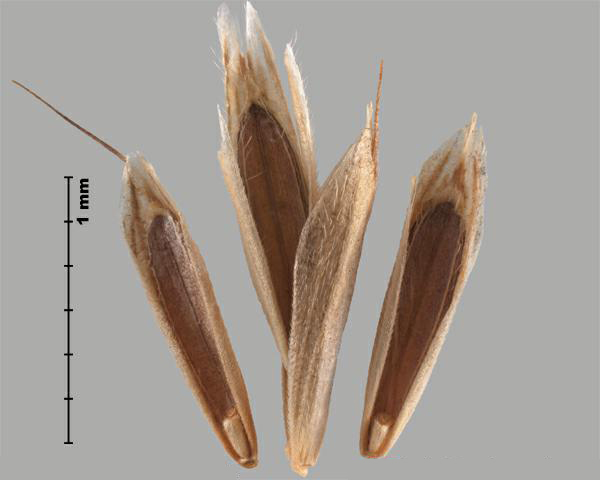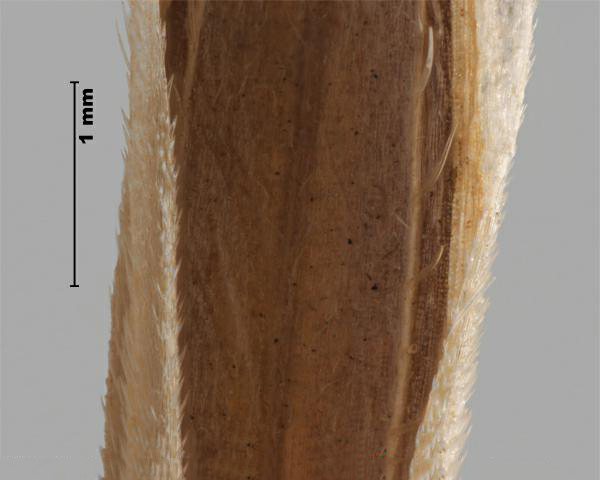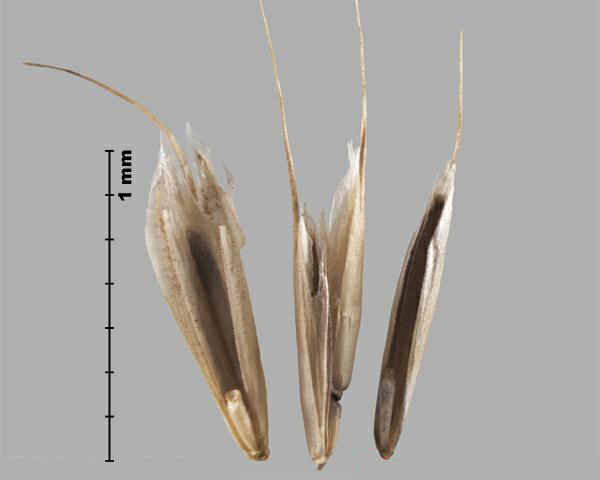Family
Poaceae
Common Name
Japanese brome
Regulation
Secondary Noxious, Class 3 in the Canadian Weed Seeds Order, 2016 under the Seeds Act.
Distribution
Canadian: Occurs in AB, BC, MB, NB, NS, ON, QC, SK, YT (Brouillet et al. 2016Footnote 1).
Worldwide: Native to northern Africa and temperate Eurasia from France eastward to China, Japan and Korea (USDA-ARS 2016Footnote 2). Introduced in parts of Europe, Australia, New Zealand, South Africa and North and South America (Holm et al. 1991Footnote 3, USDA-ARS 2016Footnote 2). Occurs throughout most of the United States (Barkworth et al. 2007Footnote 4).
Duration of life cycle
Annual
Seed or fruit type
Floret
Identification features
Size
- Floret length: 7.0 - 9.0 mm
- Floret width: 1.0 - 2.0 mm
- Awn length: 8.0 - 13.0 mm
Shape
- Long oval-shaped floret with a flared top, and in-rolled and extended lemma sides
Surface Texture
- Lemma is papery with hyaline margins, scabrous to ciliate on upper half and margins
Colour
- Floret is straw yellow
Other Features
- Palea teeth longer than 1.0 mm.
- Awn bends away from the lemma.
- The caryopsis is pubescent on the margins.
Habitat and Crop Association
Cultivated fields, old fields, rangelands, pastures, hay fields, gardens, roadsides, industrial sites and disturbed areas (Darbyshire 2003Footnote 5, Barkworth et al. 2007Footnote 4). A weed of winter wheat, grass and alfalfa seed fields, pastures and ranges, and many other places (Finnerty and Klingman 1962Footnote 6). Prefers somewhat moister habitats than B. tectorum (Kirkland and Brenzil 2007Footnote 7).
General Information
Japanese brome can invade pastures and rangelands where it competes with native species, but can be used as an early-season forage (Howard 1994Footnote 8). It has been observed to increase in natural areas under a fire-suppression management regime (Howard 1994Footnote 8).
In Canada, annual bromes are often an indicator of poor range condition, and readily infest areas where native vegetation has been disturbed by overgrazing, fire, and cultivation (Kirkland and Brenzil 2007Footnote 7). Japanese brome occurs as a contaminant in seed and grain (Canadian Grain Commission (CGC) data).
Similar species
Soft chess (Bromus hordeaceus)
- Soft chess has a similar size, oval shape, straw colour and extended lemma sides.
- The caryopsis is not pubescent on the margins. The lemmas of soft chess are often pilose, but may be glabrous. The awn is shorter, up to 4.0 mm.
Field brome (Bromus arvensis)
- Field brome has a similar size, oval shape, straw colour and extended lemma sides.
- Field brome's awn is up to 3.0 mm shorter than Japanese brome and does not bend backwards from the lemma. Field brome usually has glabrous lemmas, and they tend to not extend as much as Japanese brome lemmas.
Photos
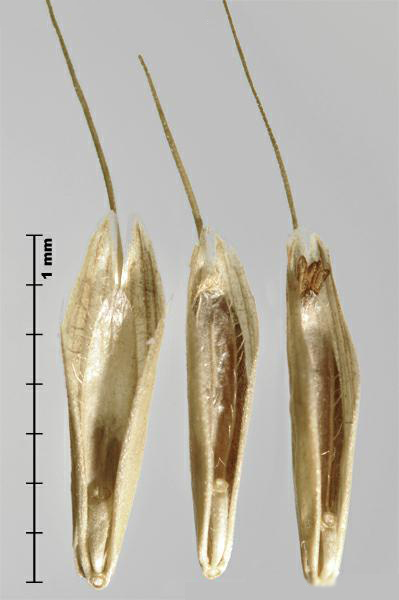
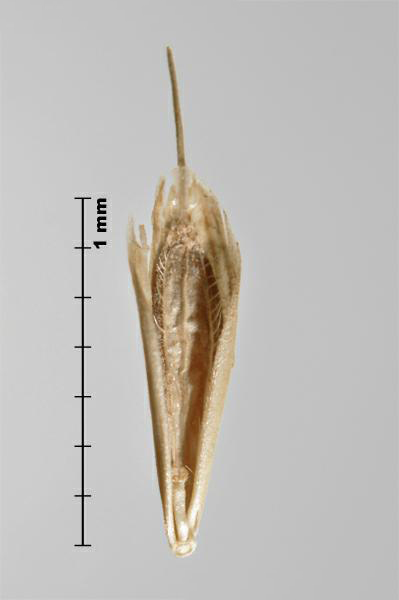

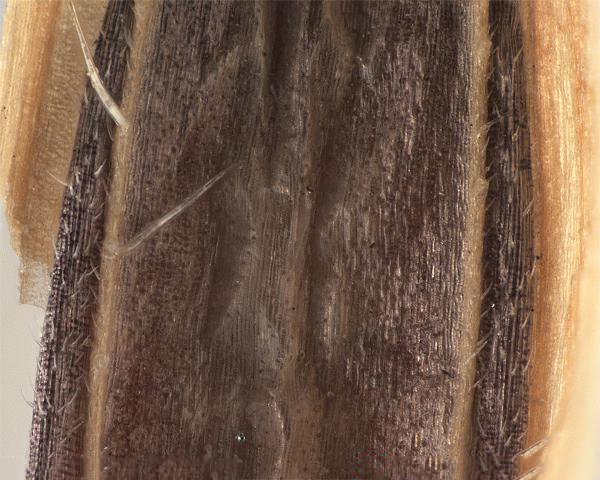
Similar species
